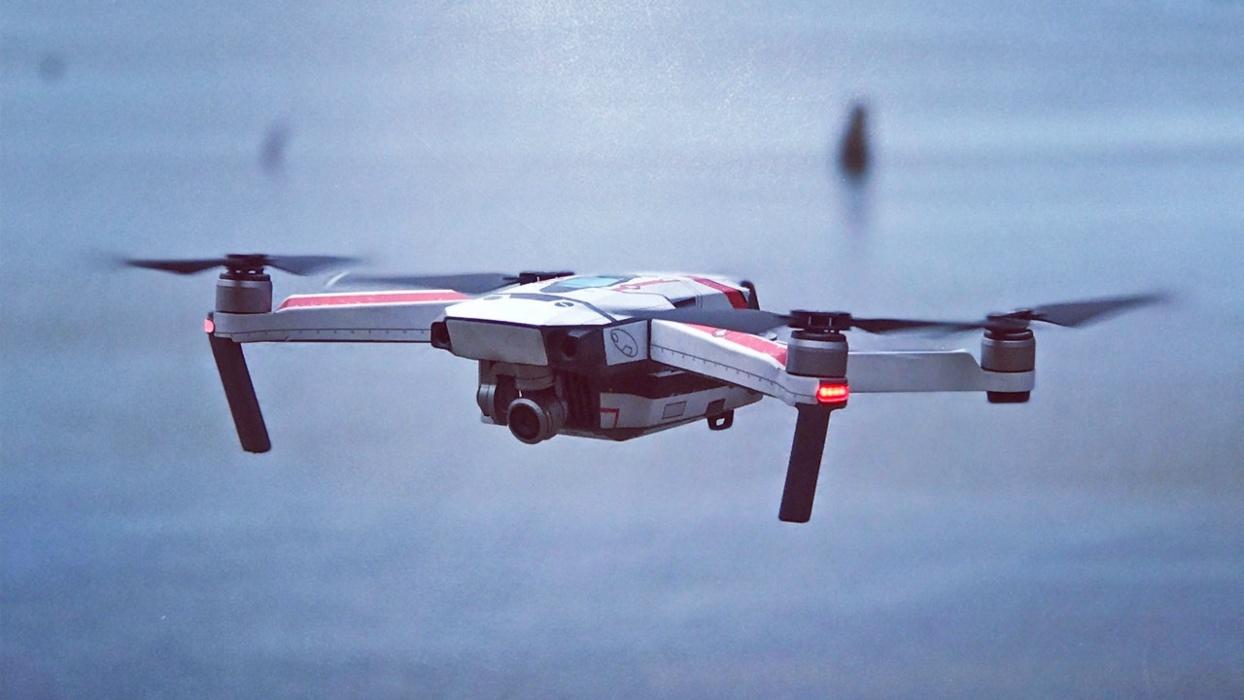Eritrea’s involvement in the war in Ethiopia’s Tigray region represents an attempt to reassert itself on the regional stage. But a military intervention in Ethiopian affairs, in pursuit of payback against the Tigray People’s Liberation Front, could result in destructive blowback.
The Eritrean military has been involved in the war in Ethiopia’s Tigray region since the conflict broke out in November 2020. Eritrea shares a 1,000 km border with Ethiopia, including with Tigray. It sent thousands of soldiers in support of the Ethiopian federal forces in their operations against the Tigray People’s Liberation Front. These actions have both prolonged and worsened the hugely destructive conflict.
Eritrea’s involvement also has wider implications. It represents an attempt by Asmara to reassert itself on the regional stage, following two decades of relative diplomatic isolation.
The large-scale commitment of soldiers – as well as logistical and political support for Ethiopian Prime Minister Abiy Ahmed – is the result of a remarkable turnaround in relations between Asmara and Addis Ababa. After almost two decades of hostility, Abiy struck a peace deal with Eritrea’s Isaias Afwerki in July 2018. This appeared to usher in a new era of stability and cooperation.
But that’s not what transpired. In the following months, Abiy intensified his programme of political reform in Ethiopia. He consolidated his power at the expense of the Tigray People’s Liberation Front. The movement had dominated politics in Ethiopia since 1991. The front was also Eritrea’s bitterest enemy. There had been a troubled history of relations between it and the Eritrean People’s Liberation Front dating back to the 1970s. This antagonism culminated in a war between Ethiopia and Eritrea between 1998 and 2000.
The outbreak of the war in Tigray served a number of purposes for Isaias. Firstly, it gave him the opportunity to end Eritrea’s long-standing international isolation. It did this by enabling him to exercise influence in a conflict which threatened to completely destabilise the region. This was a deeply worrying prospect to a range of international actors.
Secondly, it reasserted his influence in Ethiopia’s internal affairs.
And lastly it provided an opportunity to seek revenge on the Tigray People’s Liberation Front. The front’s leadership outwitted and outgunned Eritrea militarily in the 1998-2000 war. It also outmanoeuvred Eritrea diplomatically in the years following the conflict.
Eritrea’s opportunistic policy
The government in Asmara has pursued an opportunistic foreign policy, with its aim essentially to gain regional superiority at Ethiopia’s expense. Eritrea has also sought to exercise leverage by getting involved in others’ conflicts. For much of the 2000s and 2010s, for instance, Asmara defied the international consensus on Somalia. This consensus was primarily orchestrated by the government in Ethiopia, at the time led by the Tigray People’s Liberation Front. Reaching the consensus involved the creation of a Transitional Federal Government with broad international support.
Ethiopian troops and African Union peacekeepers, supported in the air by the US, launched offensives against al-Shabaab, the Somali Islamist group which Eritrea was accused of supporting. This led to the 2009 imposition of sanctions on Eritrea. There were also interventions in Darfur and eastern Sudan by the Eritrean government.
Eritrea’s regional policy has largely been influenced by Ethiopia, its much more powerful southerly neighbour. But Ethiopia has represented both an obstacle and an opportunity in the pursuit of regional dominance.
In many respects, the single biggest obstacle facing the Eritrean People’s Liberation Front regime in Asmara is a strong, united Ethiopia – a country capable of dominating the region in economic, military and diplomatic terms, and especially one covertly or overtly hostile to Eritrea itself. This was the case under the Ethiopian People’s Revolutionary Democratic Front regime led by the Tigray People’s Liberation Front.
A weakened and disunited Ethiopia – with at least some political actors who are easy to influence – therefore represents an opportunity for Eritrea’s interests. This is because the Eritrean People’s Liberation Front’s vision for the country is as regional gatekeeper and pivot – secure in itself, cohesive and militarily potent.
In search of that status, the best scenario is to have Ethiopia unstable enough to allow opportunities for intervention and influence. Asmara would also want to be able to justify prolonged militarisation, which has become the hallmark of independent Eritrean nationhood. But, it wants to avoid Ethiopia’s total collapse. Asmara’s best-case scenario is a prolonged, unresolved conflict in Ethiopia in which the presence of Eritrean forces and political support are still required by Addis Ababa.
Abiy’s assent to power and the marginalisation of the Tigray People’s Liberation Front – combined with widespread and growing political protest in the preceding years – presented just such an opportunity.
Risky strategy
But this is a risky strategy. Isaias has essentially harnessed his cause to that of Abiy. When things were going well against the Tigrayan forces – as in late 2020 and early 2021 – it looked like a justifiable policy, however catastrophic for the civilian population. But it could backfire.
There have been signs that negotiations between the Ethiopian government and Tigrayan leadership may be possible. If there is to be serious dialogue between Addis Ababa and Mekele, the Tigrayan leadership will demand the withdrawal of Eritrean forces and Isaias’ removal from discussions over Ethiopia’s future. Abiy will need to concede this. In such a scenario, Isaias will quickly find himself isolated. This would take him back to the pariah status he has occupied for most of the last two decades. Further, in the longer term, an Ethiopia where various parties are reconciled to one another’s legitimacy could once again become a hostile entity on Eritrea’s southern flank.
Involvement in other people’s wars is inherently risky business. The Eritrean People’s Liberation Front regime has frequently played with fire. It has done so domestically and regionally. Yet, to date, it has seemingly defied geopolitical gravity.
But the Eritrean army’s disproportionately violent and inhumane intervention in Ethiopia in pursuit of payback against the Tigray People’s Liberation Front and the regional stature Isaias has long craved could result in the most destructive blowback imaginable: a coalescence of Ethiopian antagonists and domestic opposition that presents an existential threat to the Eritrean government itself.![]()
Photo by Emmanuel Ondoua from Pexels.
This article is republished from The Conversation under a Creative Commons license. Read the original article.






This is yet another creative alphabet soup distillation from the many instant noodle “experts” pontificating about anything and everything African. Cute!
Great article but why using a random photo?
Best article .Thank you for your knowledgeable views.
But Tigrayans lost interest in what Ethiopianwants anymore. Ethiopia can exist without Tigrai. We can exist as a country. This is what our martyrs died for thirty years ago. If ever Ethiopian old stories came we have an exit.there isn’t a time like now to completely live Ethiopia. Staying in Ethiopia is a direct threat to Tigrai
Tigrai vs Eritrea or the vice verse was tailored before 1998-2000 war. It was never over even after the binding arbitration of Haig. No war no peace for twenty years then back to war and now what? The war goes on, on the ground of those who fall for the nonsense but told to be border or territorial aggression. Sad but true both the TPLF and PFDJ has to retire and give peace a chance to prevail. The people deserve peace and end of poverty and not politics of hatred and destruction, let those two armies and old political Marxist parties go for good.
I’m missing nuance in this blog post, which (unfortunately) is quite common when ‘outsider experts’ try to analyse the complex politics of the Horn (or even Africa as a whole). The reason TPLF has become Eritrea’s nemesis until 2020 is entirely omitted in the analysis above yet plays a vital role in understanding today’s dynamics between neighboring countries. So I’d like to provide a quick historical overview before rebutting some of your arguments.
The 2000 Algiers Agreement ended all military hostilities between the neighboring countries and provided inter alia the Eritrean Ethiopian Border Commission (EEBC). The EEBC had the task to demarcate the border; however, their decision (while being binding) was not accepted by Ethiopia. The no war, no peace state of affairs that followed has deteriorated Eritrea’s economic and diplomatic situation. However, instead of condemning Ethiopia’s violation of international law (Art. 31 of the Vienna Convention on the Law of Treaties), the international community and especially Western states sought to intensify their alliances with Ethiopia, i.e., the 2006 military invasion of Somalia (which had disastrous implications for the stability of Somalia). Simultaneously, Eritrea was becoming more and more isolated and needed to switch modus operandi. Thus, indeed, the Eritrean gov’t has ever since tried to strategically increase its leverage in the region, as well as seeking alliances with Middle Eastern states – to counterpart Ethiopia’s aggression.
However, their most significant obstacle in achieving regional leverage is not “a strong, united Ethiopia.” In fact, a secure, united region of the Horn will be the most important indicator of Eritrea’s economic, political and diplomatic prosperity as it aligns its everlasting anti-neocolonial pan-Africanist attitude. Also, I’d like to remind you that Ethiopia, under TPLF rule, was far from being united; it was actually highly fragmented. Let’s not forget the 2005 election, which led to many killings by the TPLF-led gov’t forces, and the lingering political unrest and tensions that led to the resignation of former PM Hailemariam Desalegn.